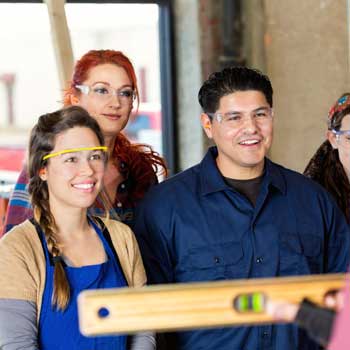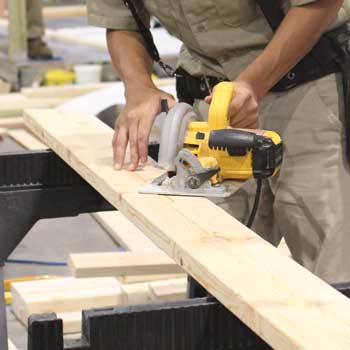It is estimated that there will be a demand for 1 million skilled craft professionals by 2023. That means there’s room for a lot of potential craftspeople.
As the need for craft skills increases, so does the importance of mutually beneficial partnerships between industry and education and the need for schools to incorporate more career and technical education (CTE) programs into their institutions.
There has never been a more important time to integrate craft professionals and construction companies into the educational system. Here are some benefits of industry-education partnerships.

The construction industry has a vested interest in connecting with students, as they are the future of construction.
When craft professionals are able to speak to students about careers in construction, they can share personal stories as well as helpful resources that teach about the industry. This can help open the eyes of many young students who may or may not have heard of the different career paths in construction.
In school, students often think to themselves, “How will this play into my future?” By connecting real professionals with the students, it gives them a glimpse into the real world and may help guide their own goals for the future.
Not only do the students learn the importance of the industry, but they officially have a point of contact that they can reach out to in the future. Who knows, maybe the craft professional who spoke to their class could be their future project manager!
Introducing construction into the classroom can create an interest in students to want to keep learning.
Many students struggle in school because they don’t fit well in the standard classroom environment; everyone learns differently. Some students learn better with more hands-on learning than reading textbooks or listening to lectures.
When they realize that they can make a career out of working with their hands, it can motivate the student to stay in school and explore a new way to learn. Sometimes this can come in the form of CTE programs in their school. Other times it can come from collaborative programs like 12 for Life that offer both education and real-world experience.
81% of high school dropouts say that real-world learning opportunities would have kept them in school. By discovering hands-on learning and opportunities for real-world experience, a student can get far more out of their education and has a massive benefit to their future.

With such high demand for talent in the construction industry, it’s beneficial for companies to build a pipeline, or a recruitment channel, from which they can reliably find potential new craft professionals.
Industry-education partnerships can play a big role in this process. For example, a welding company can have a partnership with a local high school and be in contact with the school’s counselor about new training opportunities. When students go to the counselor looking for career advice, the counselor can refer them to the welding company as an option.
This is especially important for schools who may not have CTE programs. Even if students aren’t able to get started on their craft training in school, it’s helpful to know that there are local companies who are prepared to train them upon graduation.
If schools want to truly fulfill their mission and prepare students for life after graduating, it’s important that they understand the needs and wants of the labor market.
Today, all we hear about is one path: Going to a four-year university after high school. But studies show that 7/10 jobs in the economy do not require a bachelor’s degree, and many of those jobs are in high demand, such as those in construction.
When schools and industry partner, representatives from the industry can give a clearer picture of what skills students need to be learning to the leaders in the education world. The focus of schools and their curricula can change based on the demands of the local economy, but it’s important that the industry side help guide them to those decisions.
Industry-education partnerships can help provide the best education for students.
It is important to keep these partnerships alive in and out of the classroom, and NCCER and Build Your Future are proud to provide resources to help. Check out these materials for both classroom teachers and for craft professionals going into schools, and browse the NCCER Construction Career Pathways Connection Map.